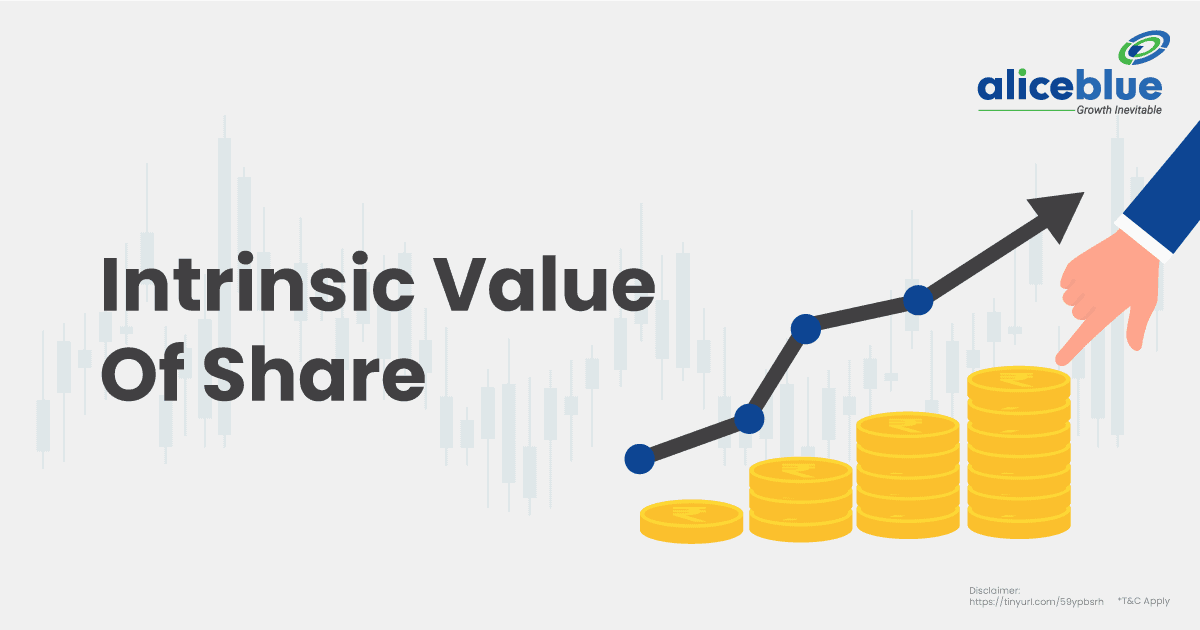Investing money in stocks is, by far, one of the most popular ways to earn money over time. Investors use many ways to find worthy investments. One of them is knowing the intrinsic value of stocks. This is important for the growth of portfolios over the long term. With this method, investors are more influenced by company value, rather than the market value, as they decide when to enter. Long-term investors may focus on intrinsic value as a strategy to maintain consistent returns. Being a long-term investors help it.
The Concept of Intrinsic Value
Intrinsic value is the value of a firm regardless of its share prices or market value. It is one of the most important terms in investing. When investors evaluate a company, they examine its financial health, growth prospects, earnings potential, and competitive advantages. Market price may change because of outside factors affecting the current state of the economy or market sentiment. The intrinsic value of assets is more stable than the market price.
As a long-term investor, you’re constantly on the lookout for stocks that are undervalued but have the capability to generate good returns in the future. On the contrary, there are times when stocks trade at a premium above their intrinsic worth.
Why Intrinsic Value Matters for Long-Term Investors
Investors can make smarter investment decisions owing to the importance of intrinsic value to long-term portfolio growth. By focusing on the fundamentals of a business, investors are not swayed by short-term fluctuations in the market. An active day trader will notice this change, particularly in unstable markets where stock prices can quickly increase and decrease.
Investors who are aware of intrinsic value are better able to differentiate between real issues and noise. When you purchase undervalued stocks according to their fair values, the resulting portfolio is likely to outpace the broader market. Investors using this method are able to pay a price that is far less than the value of the underlying business.
How to Calculate the Intrinsic Value of Stocks
It is not easy to calculate the intrinsic value of a stock, as various factors are involved in determining the financial health and potential growth of a company. Nonetheless, there are many common approaches to identifying intrinsic value.
Discounted Cash Flow (DCF) Model
The DCF model is among the most popular techniques for estimating intrinsic value. This method involves a forecast of future cash flows that a company is expected to generate and their discounting back to the present value with the help of the required rate of return. The intrinsic value of a stock is arrived at by simply calculating its present value.
The DCF model uses the future earnings, growth rate, and the time value of money of a company. While the task may seem daunting, take heart. By the time you’re done reading this, you won’t just be able to use the method yourself. You’ll also be confident in your judgment of the company’s intrinsic valuation.
Price-to-Earnings (P/E) Ratio
Using the price-to-earnings ratio is another good way to estimate the intrinsic value of a stock. The P/E ratio may not be as complex as the DCF model, but it may provide a rough indication of whether the stock is under- or overvalued on a quick basis by comparing it with its counterparts or historical data.
If a company’s P/E ratio is much higher than the industry average, the stock may be overvalued based on the earnings it produces. In contrast, if a stock has a lower P/E ratio, it typically means that it is undervalued, but that is not always the case.
Comparable Company Analysis
When a company’s financial metrics are compared with those of other firms that are similar in the same industry, it is referred to as comparable company analysis. Stock valuation can be done using ratios like P/E, Price-to-Book, and Price-to-Sales ratios. These ratios help an investor find whether the stock is fairly valued with respect to its peers.
This approach suggests that similar companies should trade at the same multiple, and therefore, this approach is useful to identify underpriced or overpriced stocks. However, it must be kept in mind that nothing is perfect, and no two companies will grow at a similar rate and profitability, and risk factors will also differ. Thus, one company cannot be compared to another one.
Using Stock Valuation Platforms to Assess Intrinsic Value
Stock valuation platforms, like Alpha Spread, can be an essential tool for investors looking to calculate the intrinsic value of stocks. These platforms help you choose stocks for investment. These provide investors with lots of data and financial models. These help determine if the stock is undervalued or overvalued. Tools like Alpha Spread simplify stock valuation. They offer real-time data, stock screening tools, and financial metrics. This makes the job of valuing easier for investors.
Alpha Spread is a stock valuation platform that allows users to perform in-depth analysis of stocks. You can do valuation with DCFs, the P/E ratio, and a whole host of other stats and features. With these tools, you can gain insights into the real worth of the stock and pick the right time to enter and exit.
Investors can also save time using Alpha Spread, as the valuation is automated using the software. Instead of working out numbers or interpreting data, the investors can utilize the platform’s data and models to provide their own valuation.
How intrinsic value can help in long-term portfolio management
Including intrinsic value in your investment approach involves more than simply finding undervalued stocks. It also plays a key role in managing a long-term portfolio. A portfolio can only grow if it consists of assets that match the risk tolerance, time horizon, and investment objectives of the investor. Recognizing intrinsic value helps investors make choices that encourage long-term expansion and mitigate risk.
When building a diversified portfolio, for instance, an investor will focus on the stock with a low P/I value ratio as there is a much higher scope for improvement in the future. As the stocks become aligned with their intrinsic value, over time, the investor can reassess the position and rotate into undervalued opportunities.
Moreover, investors can avoid getting obsessed with it since the focus will be on one intrinsic value. A long-term investor can focus on the long-term fundamentals of a stock instead of jumping in & out of the market due to the market fluctuations. This is a reliable way to build wealth.
Conclusion
The concept of stocks’ intrinsic value is a key driver for long-term portfolio growth. If investors really put their focus on the true value of a company instead of the market, our portfolio will grow a lot over time. Using stock valuation platforms like Alpha Spread is useful to investors in conducting comprehensive analyses of stocks, allowing them to make better investment decisions. In the end, incorporating intrinsic value into your investment strategy can allow you to create a strong portfolio that will offer you sustainable returns over the long term.



































